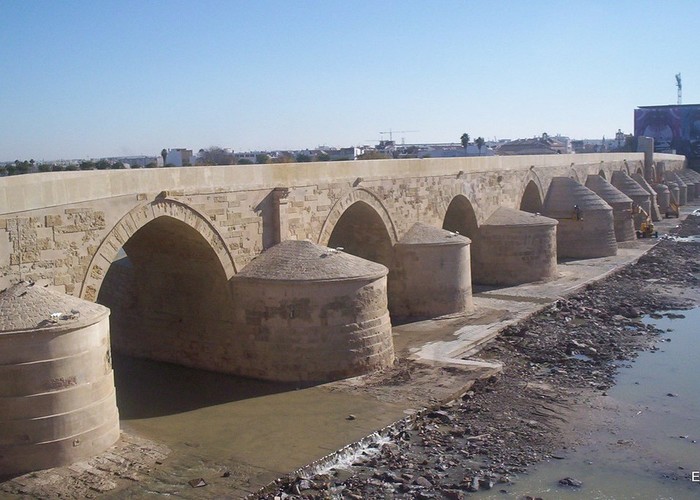SEVILLE – Andalucia is facing an extraordinary drought that mainly affects the Guadalquivir basin. In 2021, only 50% of the precipitation considered normal fell in the main water reservoir of this southern Spanish region.
The low rainfall recorded throughout the year has exacerbated the drought situation over the months. Only in the latter part of the year were abundant rains from the Atlantic able to mitigate this situation somewhat. In five days, about 10% of the rainfall for the entire year was concentrated.
The region is thus saying goodbye to the year in which also the record for the maximum temperature of the past five years was broken twice. In addition, there were increasing periods of extreme heat and extraordinary drought. These were the two main protagonists of the Andalucian meteorological year. Apparent symptoms of the climate emergency. This makes Andalucia one of the potentially most vulnerable regions to the effects of climate change.
An exceptionally dry spring and autumn
An analysis of measurements by AEMET’s main meteorological stations in Andalucia confirms the same pattern. After a relatively normal winter in terms of rainfall, with storm ‘Filomena’ bringing cold, rain, and snow, the spring and autumn of 2021 were exceptionally dry. The rains during these seasons represented about half the normal amount in most of the region.
During the climatic spring of 2021 (March 1 to May 31), precipitation made up only 50% of the average at key meteorological stations throughout the Guadalquivir Basin.
The city of Cádiz stood out during that period with 73% below usual rainfall records according to data from AEMET. Only the Mediterranean coasts and part of the interior of Granada were saved during that period, with precipitation within the mean values for the reference period between 1981 and 2010.
The data for the spring of 2021 perfectly portrays the picture that dominated the atmosphere of the peninsula from the end of February to the beginning of June. The dynamics of the arrival of isolated DANAs in the vicinity of the Iberian Peninsula is the cause of the rainfall imbalance in Andalusia. During the spring of 2021, there were many such storms and showers in the eastern half of Spain’s Mediterranean. It was different in the southern part.
Drought situation
The three months of the climatic autumn finally put the final touches on the drought situation throughout the region. Between September and November 2021, the main Andalucian monitoring points recorded an average of almost 64% water shortage compared to normal values. All main stations experienced severe shortages during one of the rainiest weather seasons of the year.
The capital of the province of Malaga registered less than 10% compared to normal. Cádiz and Huelva followed, with 23% and 28% respectively compared to normal values.
Drought in Spain alarming for the primary sector
Long-term anticyclonic blockage
The extreme dryness of the climatic autumn is largely due to the prolonged anticyclonic blockade that shaped the peninsula’s atmosphere from September to mid-December. After the summer months, the Azores anticyclone was impenetrable to the passage of the Atlantic storms. It rained only in very isolated cases, with a single episode of general rainfall over the long weekend of November 1.
Hydrological reserves at 31% of their total capacity
Due to the exceptionally dry nature of autumn, most of the region’s watersheds are in an emergency. The Guadalquivir Hydrographic Confederation (CHG) supplies 4.1 million inhabitants and had to identify on November 2 the extraordinary drought situation in 80% of its basin.
At the end of the year, Andalusian water reserves barely reached 31% of their total capacity. That is five points less than at the end of 2020 (36.4%) and 27% less than the average of water storage over the past 10 years.
Worrying situations of drought in the provinces of Córdoba and Jaén
The situation in the provinces of Córdoba and Jaén remains particularly worrying. The major reservoirs in the watershed contain less than 25% of the storage and represent 70% of the total.
The abundant rain at the end of the year was a major turning point for some districts. For example, the situation of the reservoirs in Seville is striking. They reached more than 50% of their capacity. Recovery of more than 5 points. The situation is similar in the Huelva basins of Tinto, Odiel and Guadiana. These reached half of their total reserves in December.
Current rains are no guarantee for future water supply in Spain
From ‘Filomena’ to the extreme heat of August
In addition to the lack of rain, 2021 has left a milestone in Andalucian meteorology. The effects of the storm Filomena overshadowed the beginning of the year. After that, Andalucia got its meteorological protagonist. Between August 13 and 16, a warm mass of Saharan origin left extreme heat records across the region.
Worst heat waves ever
On August 13, the minimum temperature at night was 30.2 degrees in the city of Jaén. Furthermore, during the day the mercury reached 47.4 degrees on August 14 in Montoro (Córdoba). That was a new national maximum temperature for the country. And along with Montoro, many other Andalucian places crossed the 45 and 46-degree barriers. They were the worst heatwaves in Spain since records began.


